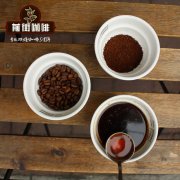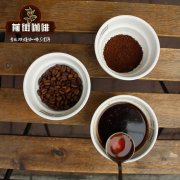What are the characteristics of the Vivetna fruit producing area in Guatemala? What's the planting story?
What are the characteristics of the Vivetna fruit producing area in Guatemala? What's the planting story?

Central and South America is the world's largest commercial coffee producing area, and there is no room for miniature coffee in the boutique coffee market. Compared with the wild, presumptuous and individual nature of fine coffee in Africa, the quality of fine coffee in Central and South America is more elegant and well-balanced. The excellent work is admirable.
Guatemala is bounded by Mexico to the north, Cuevado and Honduras to the south, the Pacific Ocean to the west and the Caribbean Sea to the west. There are many volcanoes in the environment, and the soil contains small amounts of salt. The warm sea, rainforest and alpine valleys of the Pacific Ocean form a complex and varied micro climate, giving out elegant and pleasant acidity and a balanced and comfortable taste of coffee.
Guadi Laura can be divided into eight major coffee producing areas. Among them, Huehuetenango and Coban are located in non-volcanic coffee-producing areas, compared with Antigua and Acatenango Valley in the hot mountain areas, the acidity of the fruit is more obvious, and the whole shows individuality, which is not as flat as the coffee in the volcanic area.
The closer to the equator and the higher the altitude, the more it can contain the aromatic essence of coffee beans. Vivette Nanguo, located in the northwest of Guatemala, ranks first among the eight major producing areas (1800-2100 meters) above sea level. It is high but not cold, creating solid hard beans (SHB, No.1). There is plenty of water in the dry season, and the washing method is the best choice. The bean phase of SHB was roasted with R4 (City Roast), and the swelling rate was 1.8 times. The aromas of raspberry and grapefruit make the bright acidity more wonderful.
Important Notice :
前街咖啡 FrontStreet Coffee has moved to new addredd:
FrontStreet Coffee Address: 315,Donghua East Road,GuangZhou
Tel:020 38364473
- Prev

What is the difference between the eight major producing areas of Guatemala? Flavor and taste characteristics? How do you drink it with your hands?
What is the difference between the following eight major producing areas in Guatemala at present? Flavor and taste characteristics? How do you drink it with your hands? ★ Antigua production area [Antigua Classic] ★ Artitesia production area [Traditional Atitlan] ★ Koban rainforest production area [Rainforest Coban] ★ Xinshuang production area [New Oriente] ★ volcano production area [Volcanic San Marcos
- Next

Characteristics of coffee at Incht Manor, Guatemala? What are the characteristics of the flavor trend?
Characteristics of coffee at Incht Manor, Guatemala? What are the characteristics of the flavor trend? Incht Manor has a long history of coffee ecological park. In 2008, it continued to win six times the world's highest quality C.O.E international coffee cup test in the name of local fruit. Since 1900, the estate began to grow coffee, which is run by the Aguirre family. Occupy the pristine rainforest environment at the ideal high altitude,
Related
- Detailed explanation of Jadeite planting Land in Panamanian Jadeite Manor introduction to the grading system of Jadeite competitive bidding, Red bid, Green bid and Rose Summer
- Story of Coffee planting in Brenka region of Costa Rica Stonehenge Manor anaerobic heavy honey treatment of flavor mouth
- What's on the barrel of Blue Mountain Coffee beans?
- Can American coffee also pull flowers? How to use hot American style to pull out a good-looking pattern?
- Can you make a cold extract with coffee beans? What is the right proportion for cold-extracted coffee formula?
- Indonesian PWN Gold Mandrine Coffee Origin Features Flavor How to Chong? Mandolin coffee is American.
- A brief introduction to the flavor characteristics of Brazilian yellow bourbon coffee beans
- What is the effect of different water quality on the flavor of cold-extracted coffee? What kind of water is best for brewing coffee?
- Why do you think of Rose Summer whenever you mention Panamanian coffee?
- Introduction to the characteristics of authentic blue mountain coffee bean producing areas? What is the CIB Coffee Authority in Jamaica?

